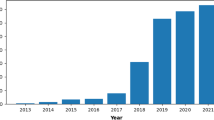Abstract
Proponents of a securities transactions tax have suggested that such a tax may reduce stock return volatility. The argument is that, to the extent that short-term speculative trading volume is the source of excess volatility, a tax that reduces such volume will reduce volatility. In the context of a simple general equilibrium model, it is shown that this partial equilibrium argument is misleading and in large part incorrect. In the absence of a tax, the model generates equilibria in which the risky asset's price exhibits excess volatility and agents engage in excess trading activity owing to the presence of destabilizing noise traders. Within the context of the model, it is shown that, although a transactions tax can reduce the volatility of the risky asset's price, the reduction in price volatility is accompanied by a fall in the asset's price as agents discount the future tax liability associated with risky asset ownership. Consequently, although price volatility may decrease slightly, the fall in equilibrium prices more than compensates, and the volatiltiy of risky asset returns unambiguously increases with the level of the transactions tax.
Similar content being viewed by others
References
DeLong, B., A.Schliefer, L.Summers, and R.Waldman. “The Size and Incidence of the Losses From Noise Trading.” The Journal of Finance 44 (1989), 681–696.
Edwards, F. “Taxing Transactions in the Futures Markets: Objectives and Effects.” Journal of Financial Services Research 7 (1993), 75–93.
Keynes, J. M. The General Theory of Employment, Interest, and Money. New York: Harcourt Brace Jovanovich. 1935.
Kupiec, P. “A Securities Transactions Tax and Capital Market Efficiency.” Contemporary Economic Policy 13 (1995), 101–112.
Kupiec, P., and S.Sharpe. “Animal Spirits, Margin Requirements and Stock Price Volatility.” The Journal of Finance 46 (1991), 717–731.
Samuelson, P. A. “An Exact Consumption-Loan Model of Interest With or Without the Social Contrivance of Money,” Journal of Political Economy 66 (1958), 467–482.
Stiglitz, J. “Using Tax Policy to Curb Speculative Short-Term Trading.” Journal of Financial Services Research 2 (1989), 101–116.
Summers, L., and V.Summers. “When Financial Markets Work Too Well: A Cautious Case for a Securities Transaction Tax.” Journal of Financial Services Research 2 (1989), 26–286.
Tobin, J. “On the Efficiency of the Financial System,” Lloyds Bank Review 153 (1984), 1–15.
Additional information
Board of Governors of the Federal Reserve System
The conclusions herein are those of the author and do not represent the views of the Federal Reserve Board or any of the Federal Reserve Banks.
Rights and permissions
About this article
Cite this article
Kupiec, P.H. Noise traders, excess volatility, and a securities transactions tax. J Finan Serv Res 10, 115–129 (1996). https://doi.org/10.1007/BF00115671
Issue Date:
DOI: https://doi.org/10.1007/BF00115671




